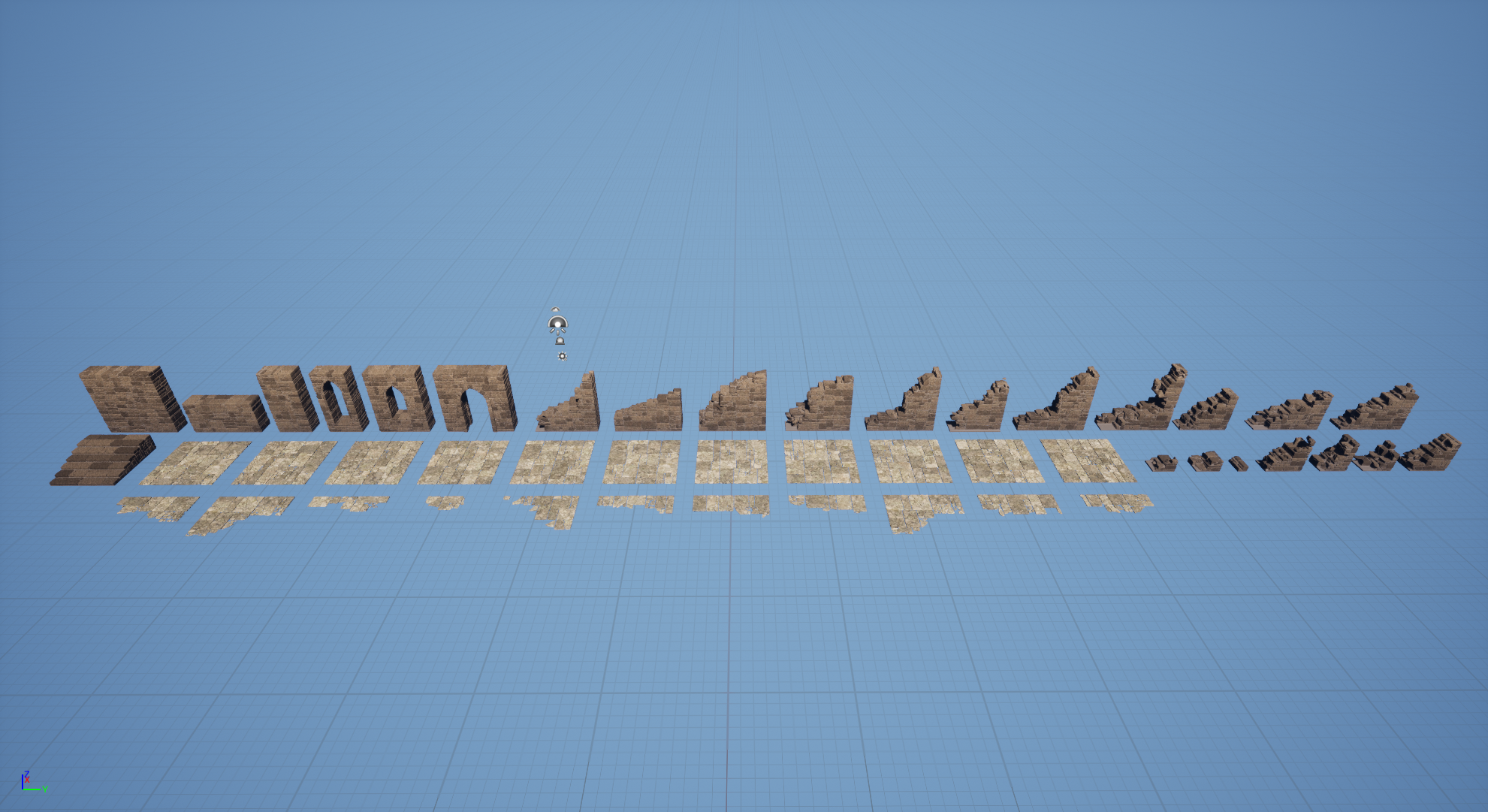This is the third volume of "Procedural Game Assets with Houdini & Unreal Engine 5." While it delves deeper into topics introduced in volume one, it is designed to be comprehensive, making it a suitable entry point for those new to the series.
In this volume, we'll delve into the creation, configuration, and customization of an extensive range of procedural tools and techniques. These are geared towards constructing modular ruins suitable for games or other projects. With these tools, we'll be empowered to craft assets that can be directed artistically, allowing us to quickly generate new pieces as needed. Such a dynamic approach guarantees flexibility in creative possibilities, ensuring they align with specific project needs.
You will learn to apply various procedural techniques to transform simple base shapes into complex meshes. This includes adding procedural cracking, remeshing, UV maps, and collision geometry. Subsequently, you will use PDG and COPs to automate the baking of texture maps, wedging, and exporting processes. Finally, you'll import the generated assets into UE5, set up master materials, get introduced to the basics of PCG, and assemble our final scene.
This course is tailored for those with a good foundation in Houdini and Unreal Engine. However, the step-by-step instructions ensure that individuals of most skill levels can easily follow along. I recommend this course to anyone eager to deepen their understanding of procedural generation in gaming.
Upon completing this course, participants will have a comprehensive grasp of designing and creating user-friendly, flexible, and practical procedural tools and workflows. They will also possess a variety of modular assets that are versatile for numerous projects.
Key Takeaways:
- Creating flexible and reusable procedural workflows.
- Adapting existing procedural tools to new styles and content.
- Generating complex meshes from art-directable base shapes.
- Generating UVs & texture maps procedurally on complex meshes.
- Creating modular game ready assets.
- Usings Houdini PDG to automatically wedge, bake, and export variations.
- Baking data to vertex colors to dive Unreal Engine materials.
- Introduction to the basics of PCG in Unreal Engine and creating custom nodes for it.

Matt Jukes
Technical Artist at Weta FX
Matthew Jukes is an experienced educator, technical artist, & programmer. With a background in tertiary education. Currently working at Weta Digital. When he isn't at work he is solo developing an indie game, an ambitious task that wouldn't be possible without leveraging Houdini's procedural pipeline. He believes working smart and using all the tools at your disposal to work efficiently is one of the most important skills new CG artists can learn, as industry demands projects grow in scale and complexity.









COMMENTS
Please log in to leave a comment.